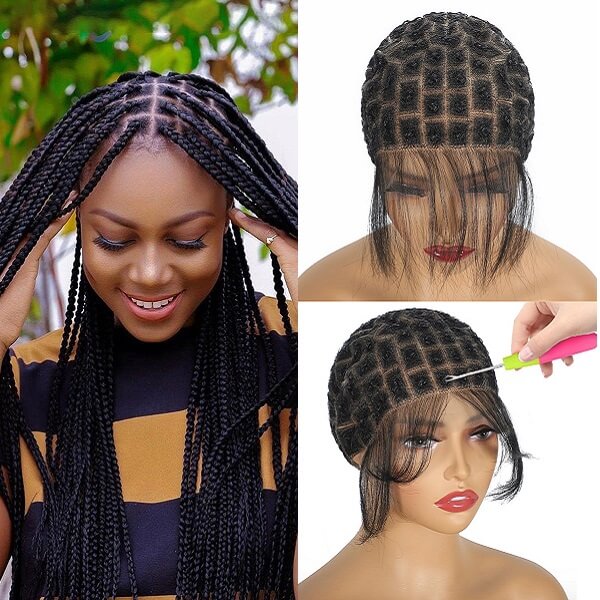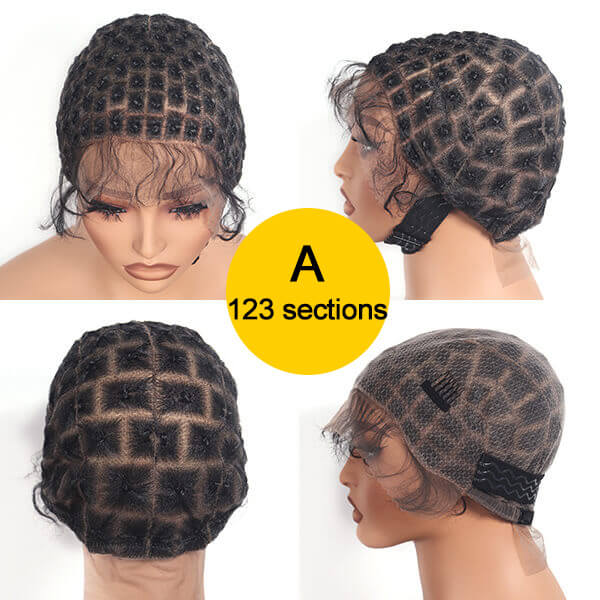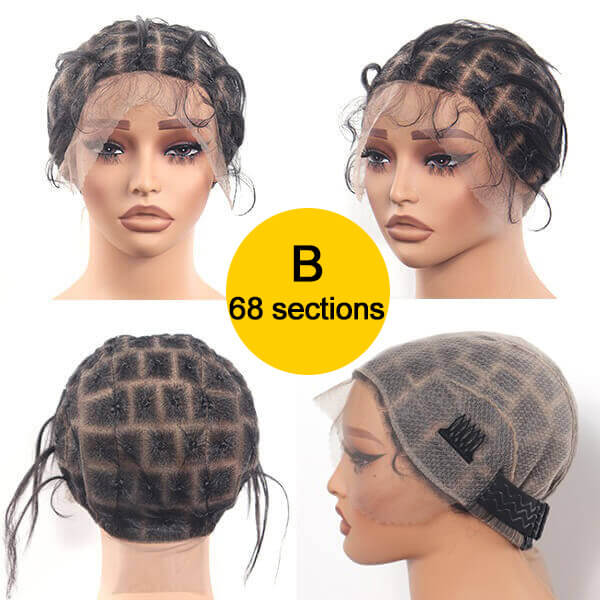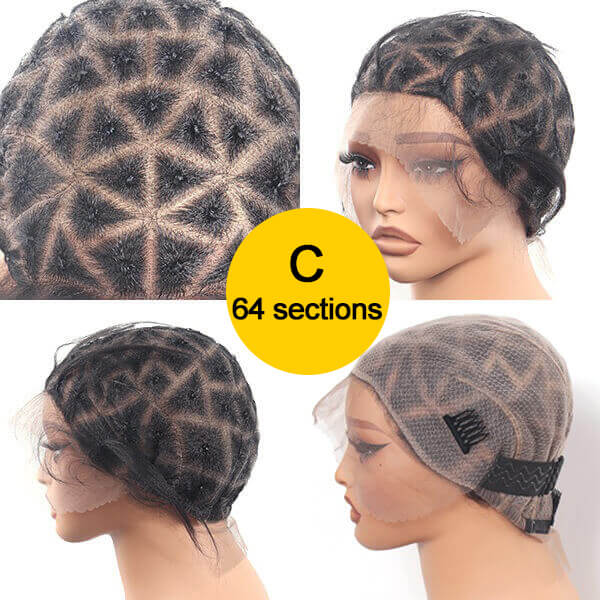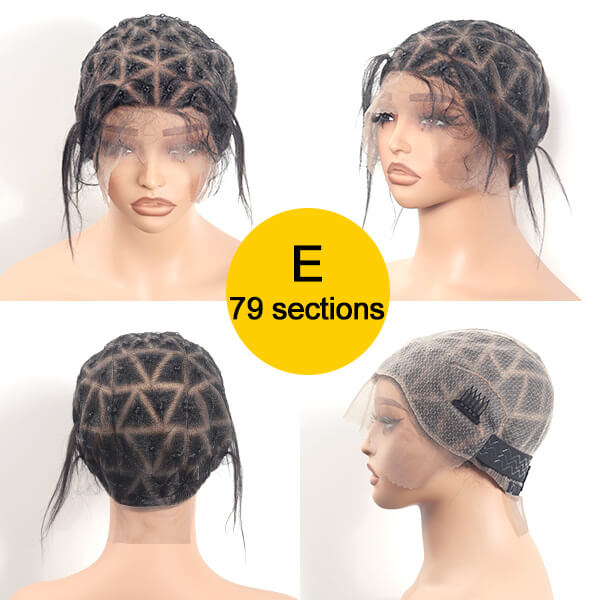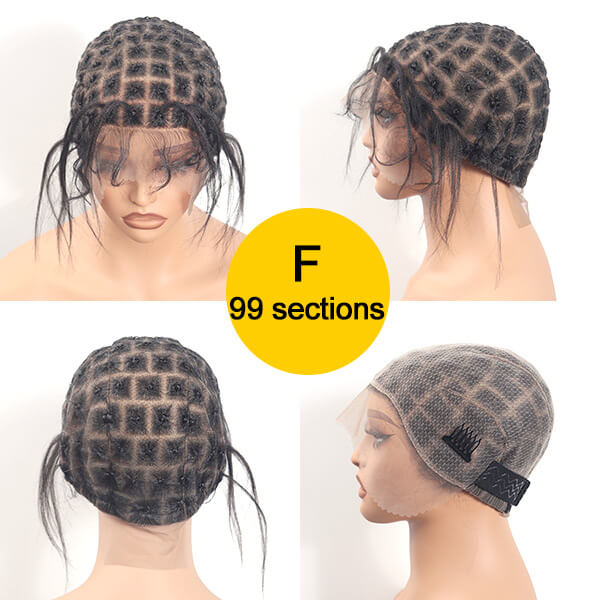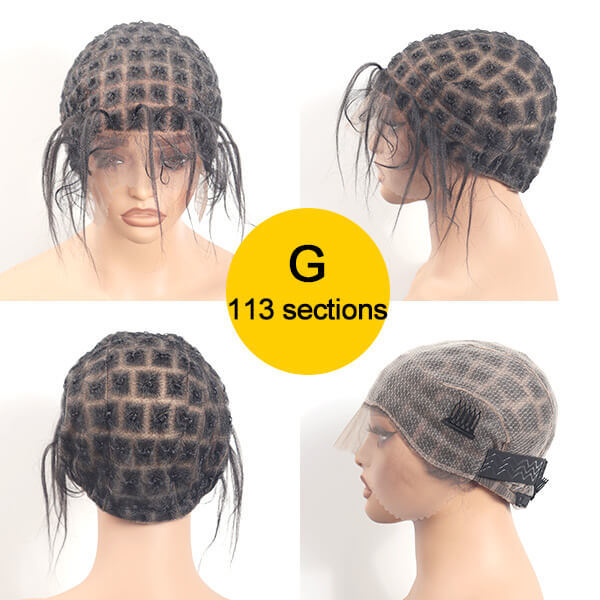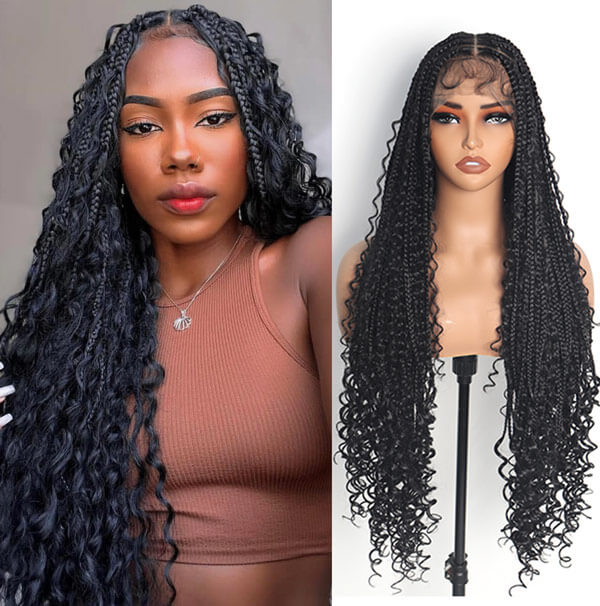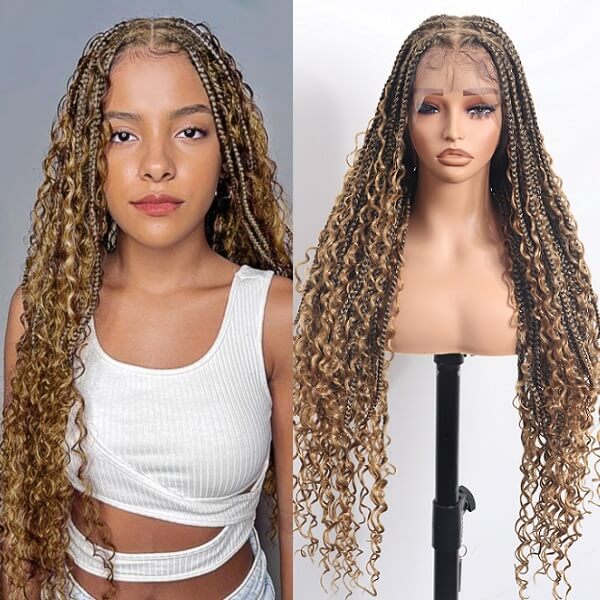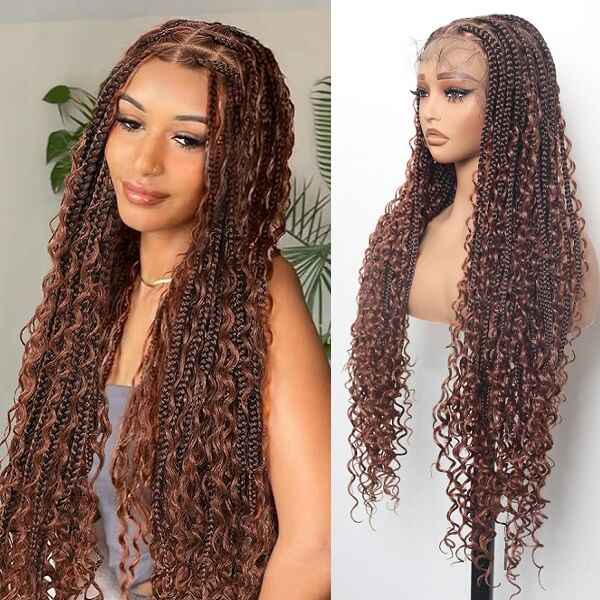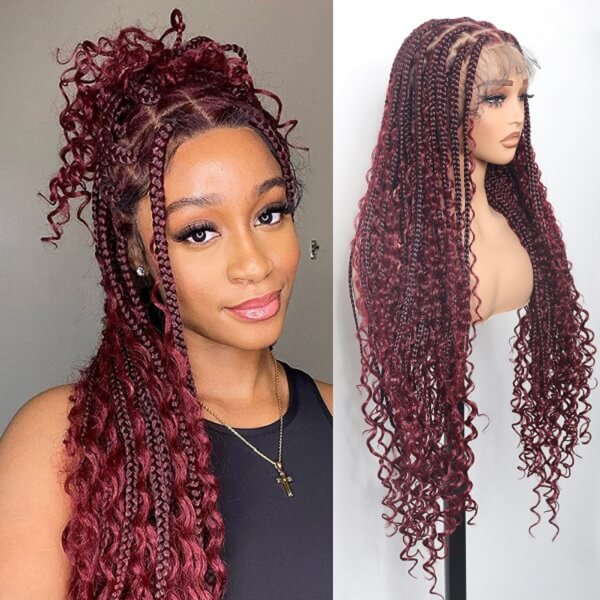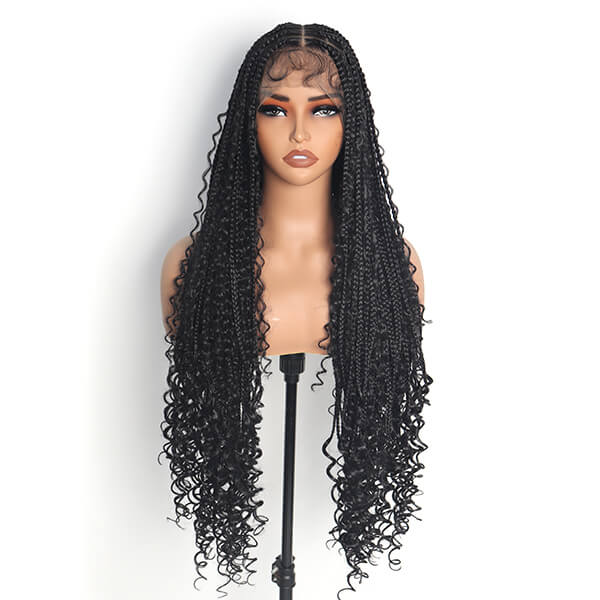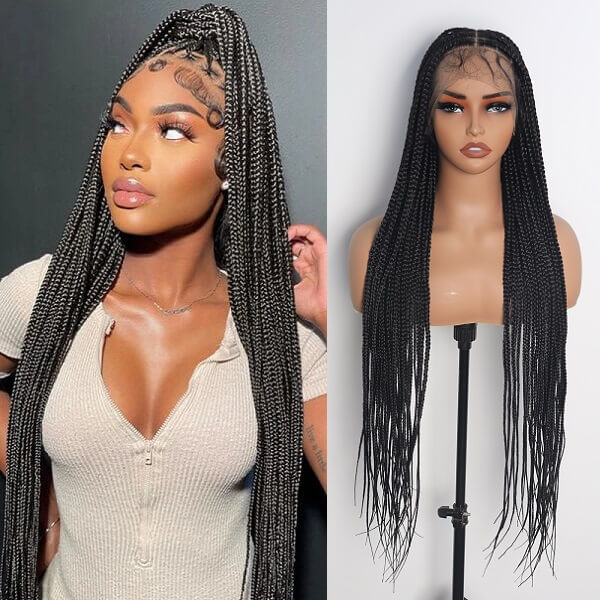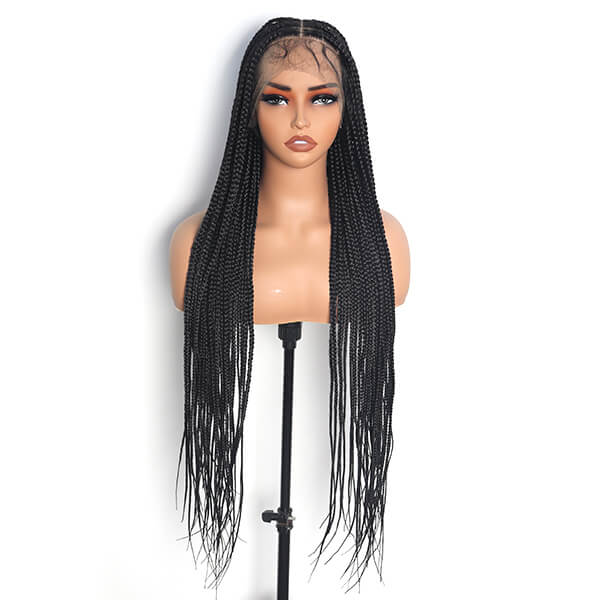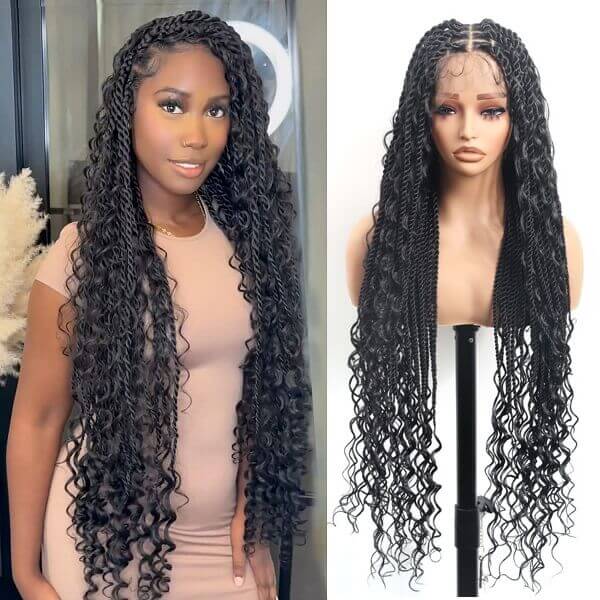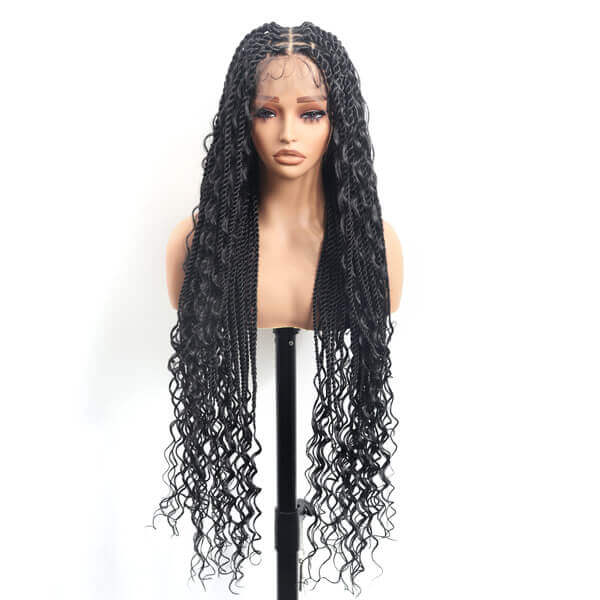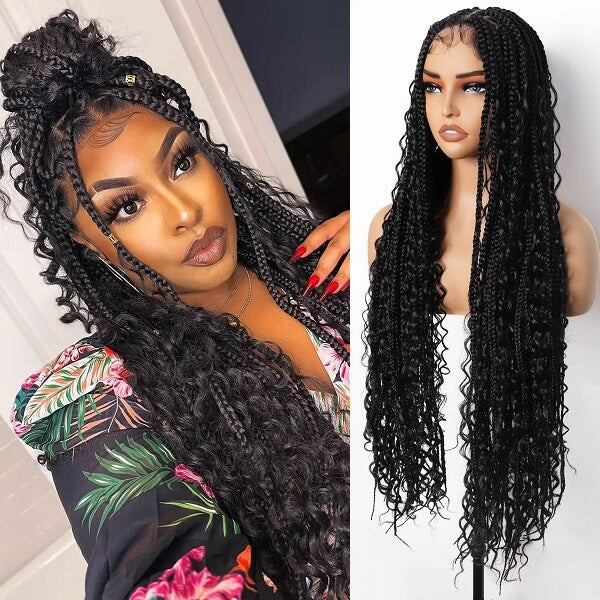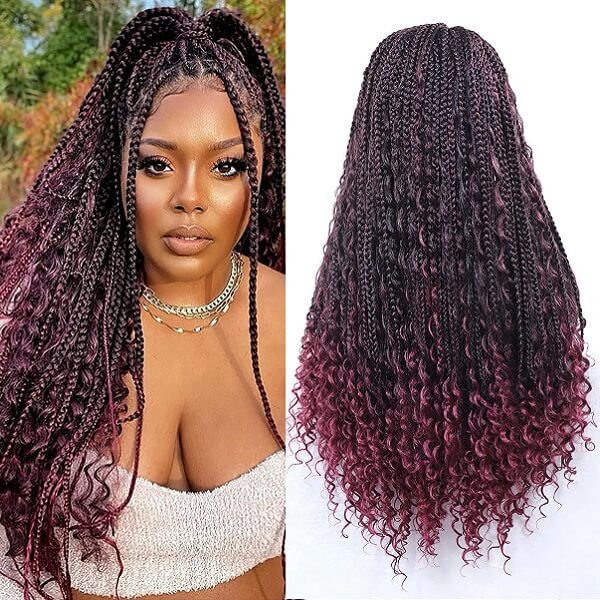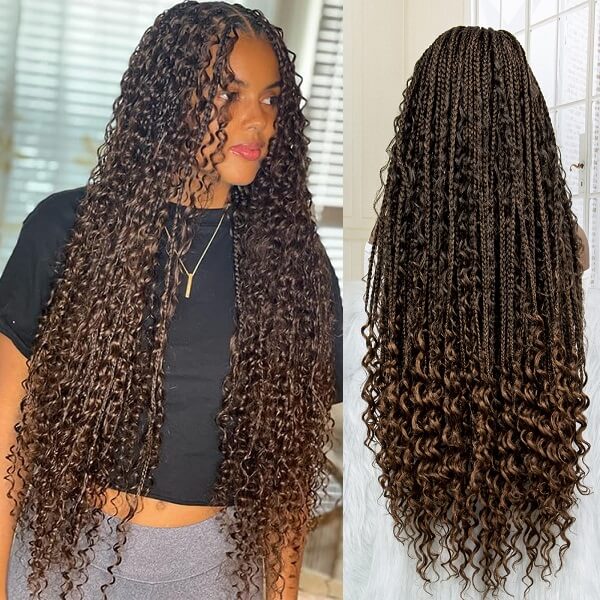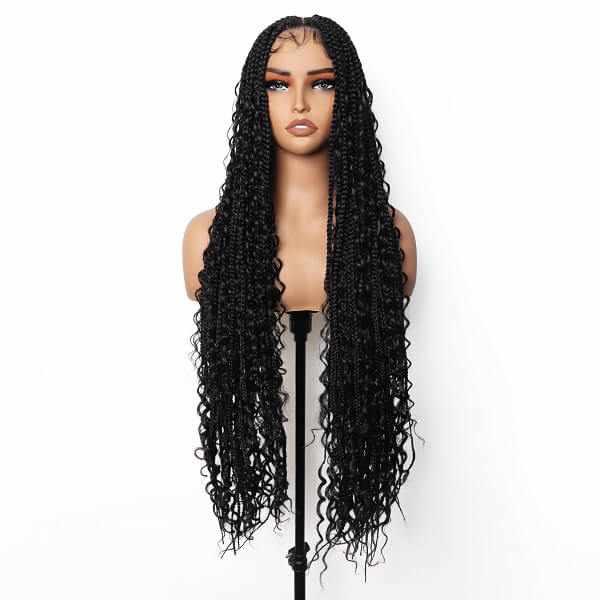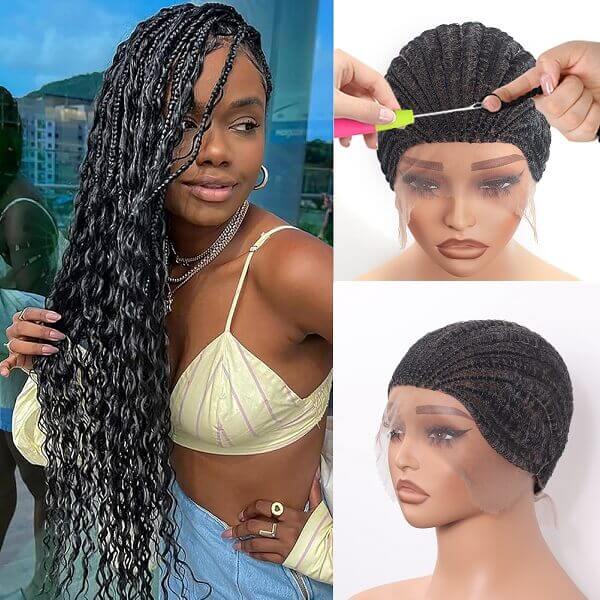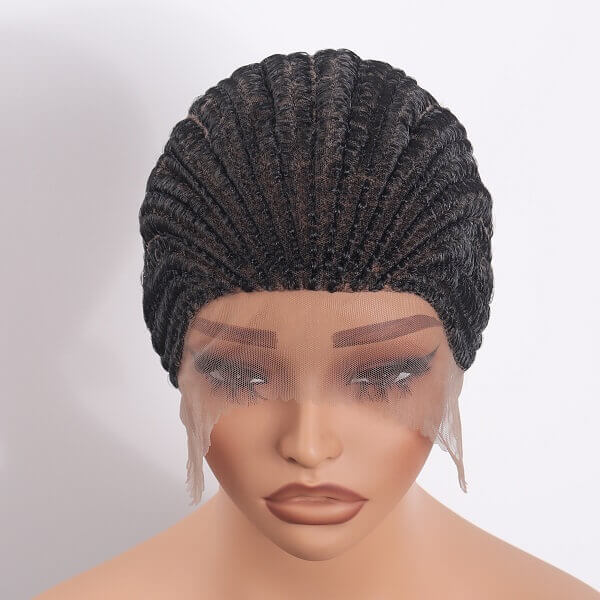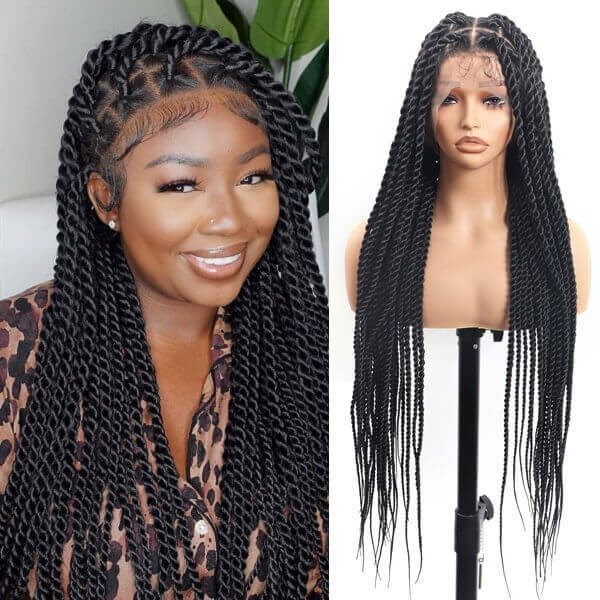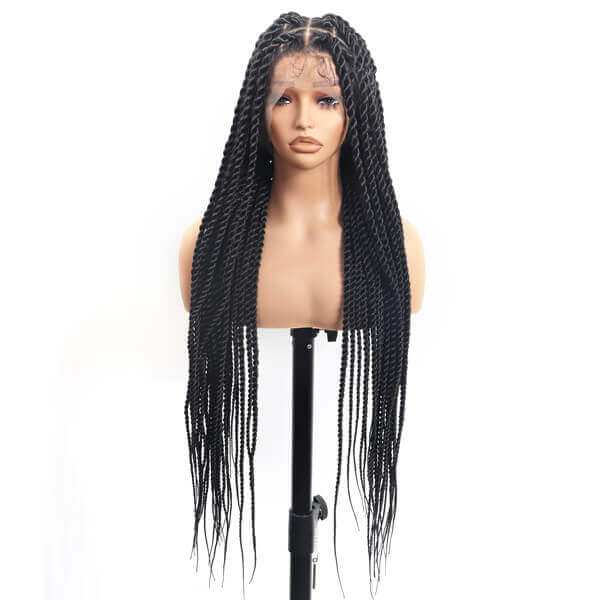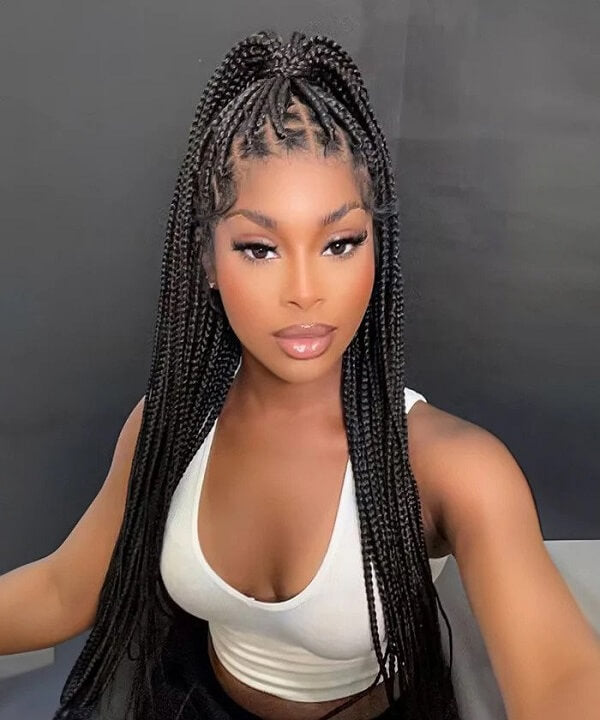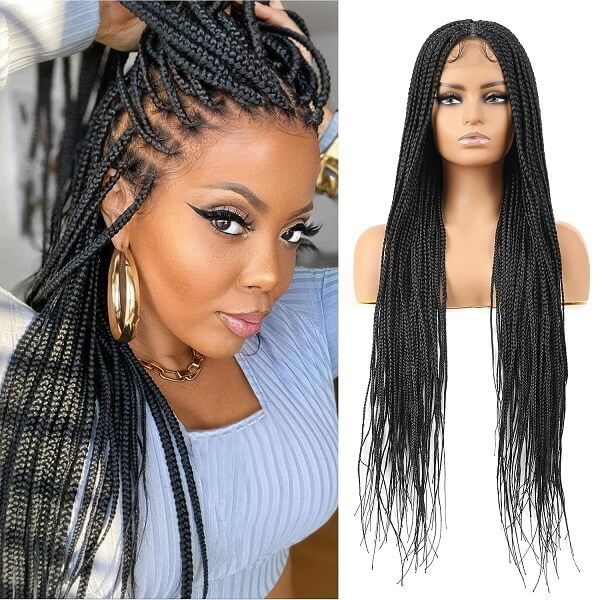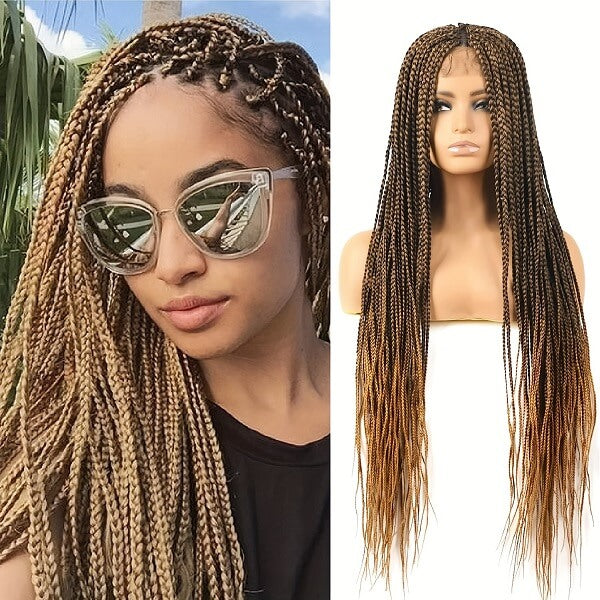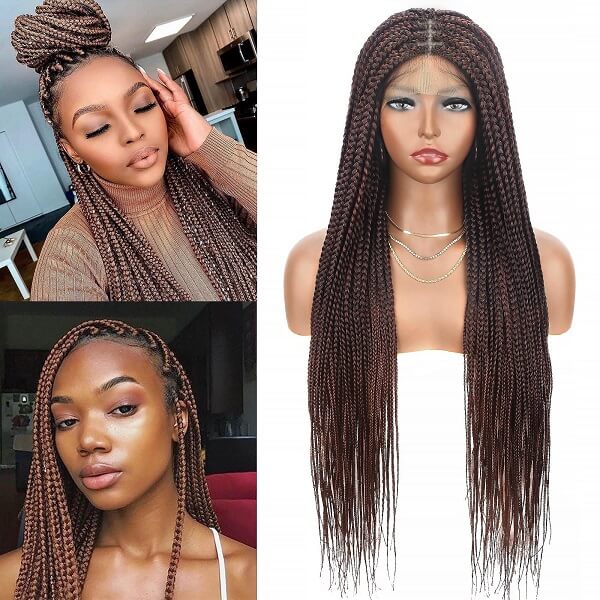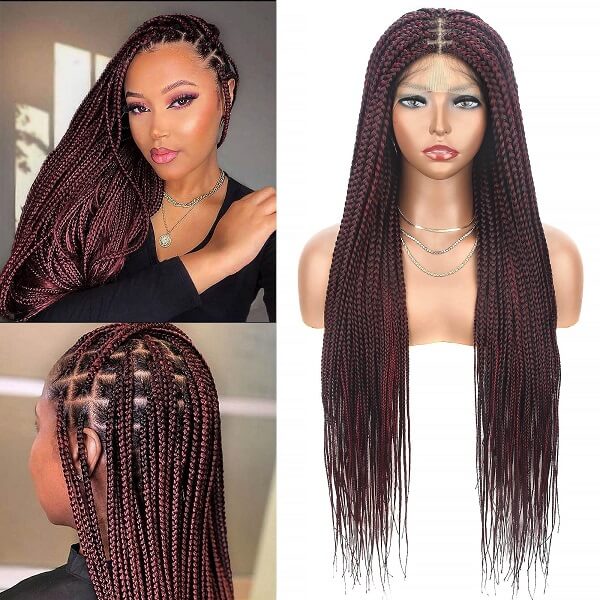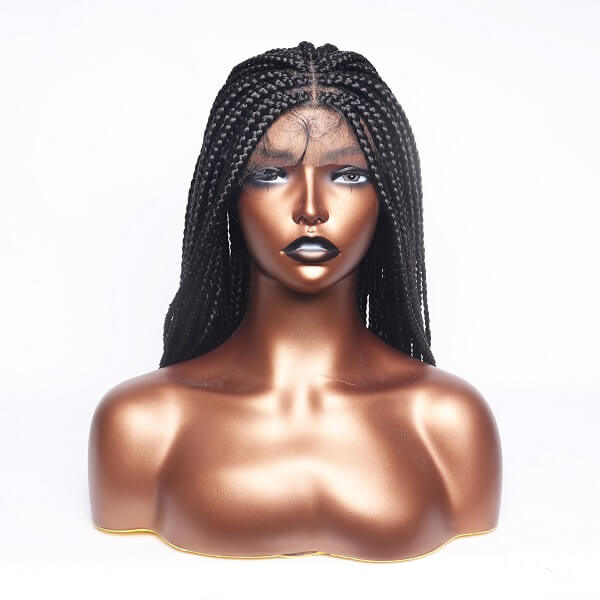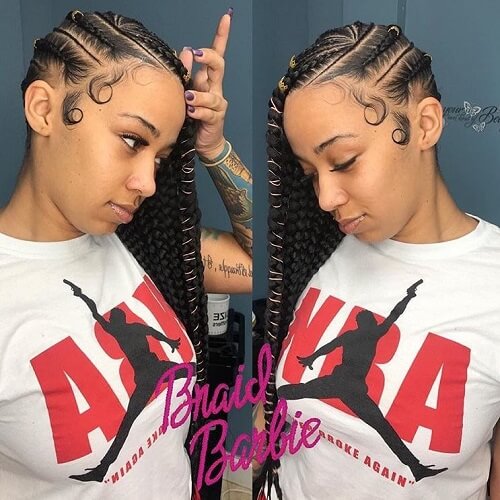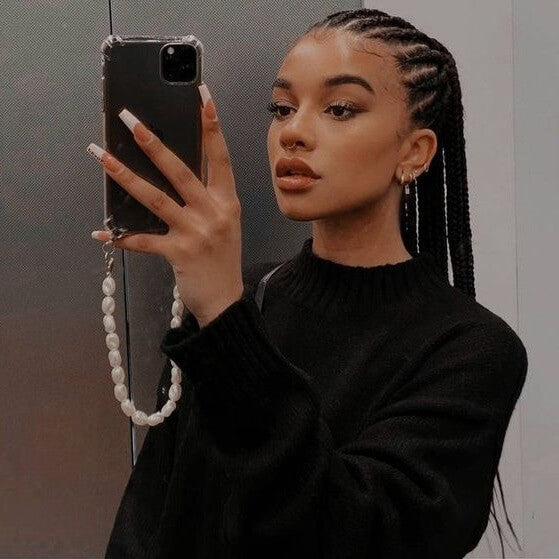Knotless braids have quickly become a favorite hairstyle for many, offering a sleek and natural look without the bulkiness associated with traditional braids. Unlike conventional box braids, knotless braids are installed with a technique that avoids the knot at the base of each braid, resulting in a more seamless appearance and reduced tension on the scalp.
Despite their growing popularity, a common concern among those considering knotless braids is the potential for discomfort or pain. The idea of a stylish hairstyle causing pain or discomfort can be off-putting. This article will explore whether knotless braids actually hurt, addressing common concerns and providing insights into how to ensure a comfortable and enjoyable braiding experience.

What Are Knotless Braids?
Knotless braids are a type of braid where the braiding hair is added gradually without creating a knot at the base. This technique results in a smooth and natural look because the braid starts with your natural hair and blends seamlessly with the added hair.
Comparison to Traditional Box Braids
- Knotless Braids: These braids are created by weaving in the braiding hair without knots. They have a smoother, more natural look since they blend seamlessly with your natural hair from the roots.
- Traditional Box Braids: In these braids, a knot is made at the base to hold the braiding hair in place. This can create a bulkier look and a more noticeable transition between your natural hair and the braiding hair.
Do Knotless Braids Hurt?
Knotless braids generally cause less discomfort than traditional braids because they avoid knots at the base. However, they can still hurt if installed too tightly or if the scalp is particularly sensitive.
Common Myths About Knotless Braids and Pain
- Myth: Knotless Braids Are Always Pain-Free:
- While knotless braids generally cause less tension than traditional braids, they can still cause discomfort if not installed properly. The key is ensuring the braids are done with the right amount of tension.
- Experience: Discomfort is Normal:
- It's not unusual to feel some initial tightness or mild discomfort after getting knotless braids. However, this should subside within a few days as your scalp adjusts.
- Myth: Knotless Braids Are the Same as Traditional Box Braids:
- Knotless braids tend to cause less discomfort than traditional box braids because they don’t involve knots, which can pull on the scalp. However, the comfort level still depends on the installation process and individual sensitivity.
Understanding the myths can help you make informed decisions and take steps to ensure a comfortable experience with knotless braids.

Reasons Knotless Braids May Cause Pain
- Tension During Installation: If the braids are installed too tightly, it can cause soreness or pain. Proper tension is essential to avoid straining the scalp.
- Hair Type and Sensitivity: Individuals with more sensitive scalps or delicate hair may experience discomfort more easily. It's important to consider your hair's needs when getting knotless braids.
- Braid Size and Length: Larger or longer braids can sometimes add extra weight and strain on the scalp, potentially leading to discomfort if not done correctly.
- Incorrect Technique: If the braiding technique isn't executed properly, it can cause uneven tension, leading to possible pain or discomfort

How to Minimize Discomfort?
Minimizing discomfort with knotless braids is key to enjoying a pain-free experience. By following a few simple tips and techniques, you can ensure your braids remain comfortable and your scalp stays healthy.
- Tips for a Pain-Free Installation: Ensure that the braids are installed by a skilled stylist who uses gentle techniques. Communicate with your stylist about your comfort level to avoid excessive tightness.
- Adjusting Tension: Aim for a moderate tension during the braiding process. The braids should be secure but not so tight that they cause strain on the scalp.
- Choosing the Right Hair Type: Opt for high-quality braiding hair that is lightweight and soft. This can reduce the weight and pressure on your scalp, minimizing discomfort.
- Aftercare Tips to Alleviate Pain: Use a moisturizing scalp treatment or oil to soothe the scalp. Avoid pulling or manipulating the braids too much and give your scalp time to adjust by gently massaging it regularly.

Aftercare for Knotless Braids
Maintaining Comfort and Reducing Discomfort: To keep your scalp comfortable, regularly massage it with your fingertips to improve blood circulation. Avoid tight hairstyles or excessive manipulation of the braids to prevent additional strain. Ensure you sleep on a satin or silk pillowcase to reduce friction and breakage.
Recommended Products and Practices: Use a lightweight, moisturizing scalp oil or serum to keep your scalp hydrated and reduce itching. A sulfate-free, gentle shampoo is ideal for washing your scalp without causing dryness. Additionally, consider using a leave-in conditioner to maintain moisture and flexibility in your braids.

When to Seek Professional Help?
Knowing when to seek professional help is crucial for maintaining the health and comfort of your scalp while wearing knotless braids.
Signs That Require Attention:
- Persistent Pain or Soreness: If you continue to experience significant pain or discomfort that does not improve after a few days, it may be a sign of issues such as excessive tension or an allergic reaction.
- Redness, Swelling, or Irritation: These symptoms could indicate an inflammatory response or an infection. Persistent redness or swelling around the braids is a cause for concern.
- Unusual Itching or Discomfort: If itching or discomfort becomes severe or continues to worsen, it may signal a scalp issue that needs professional evaluation.
- Signs of Infection: Look out for symptoms like pus, severe tenderness, or fever. These could indicate a scalp infection requiring immediate medical attention.

When to Consult a Stylist or Dermatologist:
- Severe or Ongoing Pain: If you are experiencing severe discomfort despite following recommended aftercare practices, consult a stylist to assess the installation and adjust if necessary, or see a dermatologist for further evaluation.
- Scalp Issues: For persistent redness, swelling, or signs of infection, seek advice from a dermatologist to get proper diagnosis and treatment.
- Uncertainty About Care: If you're unsure about how to manage your braids or if discomfort persists without clear cause, consulting a stylist can provide guidance on proper techniques and products, while a dermatologist can address underlying scalp health concerns.
Seek professional advice if you experience ongoing discomfort, redness, or swelling. Acting quickly can help you stay comfortable and healthy while enjoying your braids.
Conclusion
Knotless braids offer a stylish and natural look while generally causing less discomfort than traditional braids. However, factors like installation technique, tension, hair type, and braid size can influence whether you experience any pain. By choosing the right stylist, ensuring proper tension, and following effective aftercare, you can enjoy knotless braids comfortably.
Embrace the beauty and versatility of knotless braids with confidence. Proper care and the right approach can minimize discomfort. Explore a wide range of stunning knotless braid styles at mybraidedwig.com to find your perfect braid look!
FAQs about knotless braids and pain:
Q: Can knotless braids cause long-term damage?
A: When installed and cared for properly, knotless braids should not cause long-term damage. However, excessive tension or poor aftercare can lead to issues.
Q: Is it normal to feel tightness with knotless braids?
A: Some initial tightness is normal, but it should decrease as your scalp adjusts. Persistent tightness may indicate that the braids are too tight.
Q: How long does it take for knotless braids to stop hurting?
A: Discomfort should subside within a few days. If pain continues beyond this period, it may be worth seeking professional advice.
Related Articles:
How To Do Knotless Box Braids?
Knotless Braids Vs. Knot Braids
50 Stunning Knotless Braids Hairstyles You Need to Try!
How Long Do Jumbo Knotless Braids Last?






